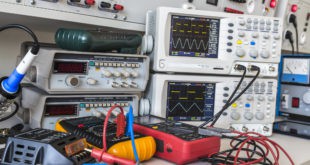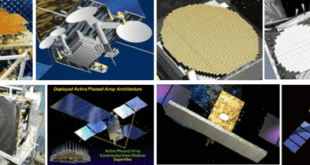In the world of advanced engineering, precision is paramount. Whether in robotics, aerospace, medical devices, or industrial automation, the ability to control motion with high accuracy is a critical factor in achieving desired outcomes. This is where precision motion control systems come into play. These systems are the backbone of …
Read More »TimeLine Layout
July, 2025
-
6 July
Evolution of Consumer Electronics Product Design and Development
The world of consumer electronics design and development has undergone a monumental transformation, evolving from rudimentary approaches to highly integrated and user-centric processes. From the early days of analog devices like radios and televisions to today’s interconnected digital ecosystems, the journey of consumer electronics has been defined by technological innovation, …
Read More » -
6 July
Advanced Millimeter-Wave Testing and Measurements for 5G, Ka-Band Satellites, Military, and Automotive Radar Systems
As technology advances and demand for faster, more reliable communication systems grows, millimeter-wave (mmWave) frequencies are becoming increasingly essential in various industries. Millimeter-wave (mmWave) technologies are revolutionizing several sectors, including 5G cellular communications, Ka-band satellite communications, and military and automotive radar systems. These high-frequency bands, typically ranging from 30 GHz …
Read More » -
5 July
Exploring the Fascinating World of Microwave Components and Devices: An Overview
Microwave technology is at the heart of modern communication systems, radar technology, satellite communication, and even advanced medical devices. Operating in the frequency range of 300 MHz to 300 GHz, microwave components and devices have unique characteristics that make them essential in high-frequency applications. From enabling wireless communication to powering …
Read More » -
5 July
Beyond the Blur: How Ultrahigh‑Definition Quantum dots (QDs) Displays Are Revolutionizing Wearable Tech
The Invisible Interface Revolution Imagine reading a novel on a postage‑stamp screen while jogging—this encapsulates the optical engineering nightmare in today’s AR glasses and smartwatches. As wearables shrink, the demand for ultrahigh‑definition (UHD) pixel density explodes: recent advances now reach over 25,000 pixels per inch (PPI), far exceeding the ~460 …
Read More » -
5 July
The Global 5G Testing Equipment Market: Trends, Drivers, and Regional Analysis
As the 5G revolution transforms industries and reshapes global connectivity, the demand for 5G testing equipment is soaring. This equipment plays a critical role in validating the performance, reliability, and compliance of 5G networks and devices before deployment. From ensuring seamless connectivity to supporting emerging technologies like IoT, AR/VR, and …
Read More » -
4 July
Antenna Technologies Shaping the Future of Space-Based Communications
Space-based communications have revolutionized how we connect, navigate, and explore. The realm of space-based communications is undergoing a significant transformation, driven by advancements in antenna technologies. From enabling high-speed data transfer across vast distances to powering next-generation satellite constellations, antennas play a pivotal role in ensuring the seamless exchange of information …
Read More » -
4 July
Hybrid Propulsion in Military Land Vehicles: The Future of Armored Mobility
Modern military operations demand armored vehicles that are not only heavily protected and armed but also fuel-efficient, stealthy, and adaptable to evolving battlefield conditions. While traditional diesel engines have long powered tanks and infantry fighting vehicles, hybrid-electric propulsion systems are emerging as a game-changing alternative. By combining internal combustion engines …
Read More » -
4 July
Maximizing Project Success with Earned Value Management Techniques
In today’s dynamic and competitive business environment, organizations are under constant pressure to deliver projects on time, within scope, and under budget. Earned Value Management (EVM) has emerged as a critical project management technique to monitor progress, control costs, and ensure project success. This article explores the key principles of …
Read More » -
4 July
Locking Away Carbon: Innovations in Carbon Storage Technologies for a Climate-Resilient Future
As the world races to combat climate change, the urgent need to reduce atmospheric carbon dioxide (CO₂) has never been clearer. While slashing emissions remains critical, scientists warn that even with rapid decarbonization, legacy CO₂ will linger for centuries. Enter carbon storage—a suite of technologies designed to capture and lock …
Read More »
 International Defense Security & Technology Your trusted Source for News, Research and Analysis
International Defense Security & Technology Your trusted Source for News, Research and Analysis

